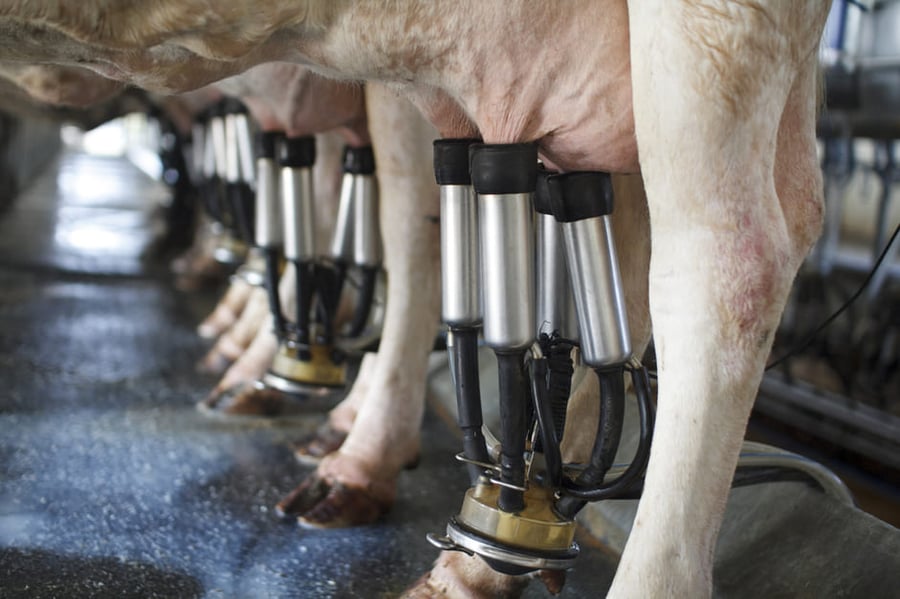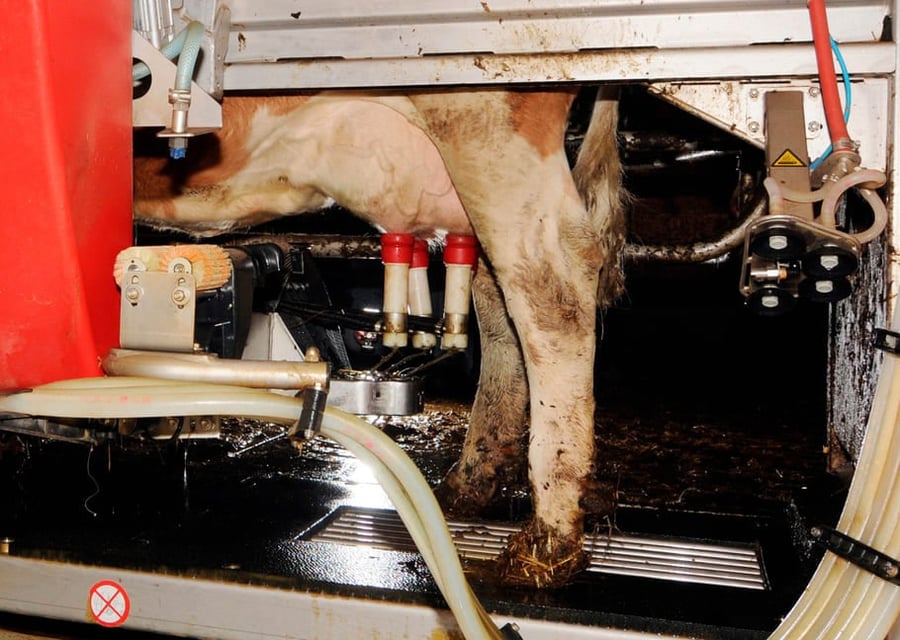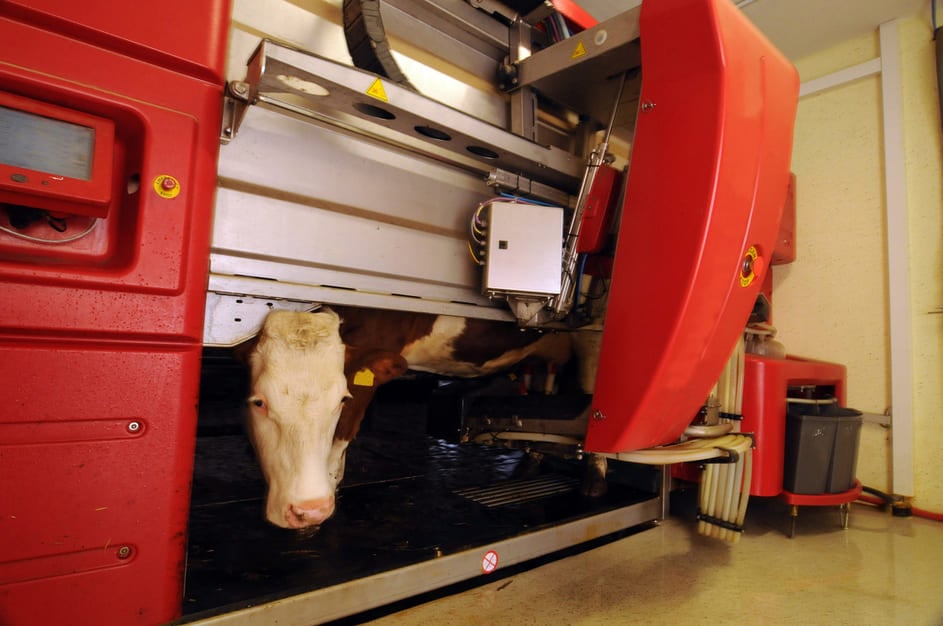Scientific and technological evolution has been a hallmark of the past few decades, and livestock farming is no exception. It has been 30-years since commercial automated milking systems (AMS) were first installed in the Netherlands 1. A massive increase in the number of operational AMS was then observed, with more than 35 000 installed worldwide by 2019 2. Advantages and disadvantages have been thoroughly addressed when it comes to milking robots. However, perceptions vary widely between farmers according to their particular experiences and expectations. It is, however, undeniable that robotic milking is one of the major evolutions of dairy farming, keeping pace with animal health and welfare concerns and with farmers’ expectations towards a more flexible schedule and improved quality of life.

Economics
On average, milking robots increase milk yield and decrease labour costs and time devoted to milking-related activities3. The possibility to personalize visiting frequency according to stage of lactation (early-lactation cows may visit the robot 4-5 times and late-lactation cows are limited to 2-3 visits) allows for the optimization of the robot efficiency and influences productivity of the farm. However, even with higher milk yields and gross income, profitability is not necessarily higher in AMS farms comparatively to conventional farms2. In fact, opposite situations may be observed until the amortization period is over. As such, if the goal is solely to improve economic efficiency, it is advisable to perform profitability projections and compare those to conventional farms milking twice or three times per day.

Human Wellbeing
If there is one thing the past three years have taught us, is that anticipating scenarios might be challenging. However, it is undeniable that we have been facing whirlwind technological changes, particularly in the developed countries. Most of these changes have come to ease our work, promote communication activities and improve our lives. Interestingly, introduction of new technologies to dairy farms have essentially followed the same principles. Major drivers for the adoption of AMS are the increased flexibility schedules, the reduced physical work associated with the milking process, the overall improvement of the quality of life, and the desire to adapt to what is perceived as the future of dairy farming4. It is important for the future of the sector that potential successors (born in the heyday of technological evolution and surrounded by smart technologies) perceive dairy farming as an attractive activity, without the rigid schedules required by conventional systems. It is worth pinpointing, though, that total workload does not decrease with robotic milking. It is directed, instead, to other activities such as analysing and extracting data from the software, improving herd management activities, fetching cows, and performing basic robot maintenance (farmers must be on-call 24h for alarms).
Animal Health and Welfare
Public concern regarding animal welfare has been increasing dramatically for the past few years. Livestock farming should be able to keep up and commit with consumers' concerns and adopt strategies that maximize animal welfare. This should be assured and, ideally, compliant with the “The Five Domains Model”, that besides meeting the “five freedoms” concept, it also addresses the mental state and the positive and comfortable experiences provided to the animals5, 6. In this line, robotic milking – also known as voluntary milking – has the potential to increase animal welfare by allowing cows to move freely and express normal behaviour and social interactions. Another great advantage of milking robots is the real-time monitoring of the cows’ activity, health and production, in a holistic approach. Well managed data allows the farmer to act promptly by early detection of behavioural changes, body weight and milk production fluctuations and milk quality deviations. However, the exhaustive amount of information provided by the robot may be overwhelming, and the farmer may benefit from the implementation of herd management systems with the help of veterinarians, nutritionists and consultants, to ease decision-making and define strategies on the short and long terms.

Key take aways
More than for profitability reasons, it is expected that dairy farms will keep on adopting automated milking robots to enhance quality of life and wellbeing, improve animal health and welfare and to keep up with technological evolution. It is thus likely that implementation of new technologies will follow the demands of farmers and workers born in the midst of technological evolution and eager to use smart-farm technologies. These systems not only facilitate the implementation of herd management systems and preventive medicine strategies, but also provide the opportunity for cows to express natural behaviour and social interactions, improving their health and welfare.
References
1. Cogato A, Brscic M, Guo H, Marinello F, Pezzuolo A. Challenges and Tendencies of Automatic Milking Systems (AMS): A 20-Years Systematic Review of Literature and Patents. Animals (Basel). 2021;11(2).
2. Salfer J, Endres M, Lazarus W, Minegishi K, Berning B. Dairy Robotic Milking Systems – What are the Economics? USA: National Cooperative Extension; 2019 (accessed in 2022)
3. Tse C, Barkema HW, DeVries TJ, Rushen J, Pajor EA. Impact of automatic milking systems on dairy cattle producers' reports of milking labour management, milk production and milk quality. Animal. 2018;12(12):2649-56.
4. Vik J, Straete EP, Hansen BG, Naerland T. The political robot - The structural consequences of automated milking systems (AMS) in Norway. Njas-Wagen J Life Sc. 2019;90-91.
5. Mellor DJ, Beausoleil NJ, Littlewood KE, McLean AN, McGreevy PD, Jones B, et al. The 2020 Five Domains Model: Including Human-Animal Interactions in Assessments of Animal Welfare. Animals-Basel. 2020;10(10).
6. Webster J. Animal Welfare: Freedoms, Dominions and "A Life Worth Living". Animals-Basel. 2016;6(6).



Leave your comments here